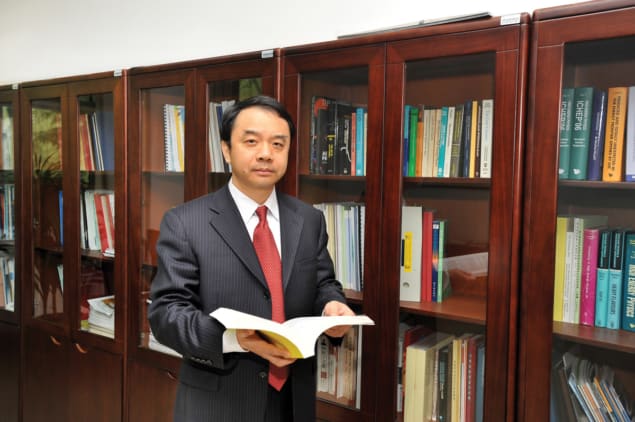Yifang Wang, director of China’s Institute of High Energy Physics, talks to Physics World about the country’s plans for a 100 km circumference collider to study the Higgs boson

The China Electron Positron Collider (CEPC) is an ambitious project. What will it be used for?
The CEPC will be the world’s largest electron–positron collider with a circumference of 100 km. It will study the properties of the Higgs boson, which was discovered in 2012 at CERN’s Large Hadron Collider. We know that it has properties very similar to what the Standard Model of particle physics predicts. But the LHC and even its next upgrade – the High-Luminosity LHC – is only going to test the agreement between the Standard Model and the data with a precision of around 10%. The CEPC will get this precision down to 1% allowing us to probe new physics.
What is the current status of the collider?
We are working on the design. We have almost finished the conceptual design report, and we have also started a number of R&D projects for some of the key components of the machine. Things are moving forward and we hope that in the next three to five years we will be able to get a positive signal to go ahead with construction.
Where could the collider be built?
We don’t know yet. We need to get a more detailed investigation of the geological conditions for a couple of possible sites and also local support. We need to know what kind of support from the local government we will receive in terms of, for example, laboratories, living conditions, roads and power supply. We need time to finalize all the details.
How confident are you that central government will support the CEPC’s construction?
I cannot say if there will be support from the Chinese government. We will try our best to get it. From all the signals we have obtained so far, we know that there is enormous interest from many people and many funding agencies. But, in the end, we need a final decision from the central government, and that takes time.
How much international collaboration are you expecting for the CEPC?
We expect something like 20% to 30% of international contributions.
Given that the International Linear Collider (ILC) is also gathering momentum, does the world need two Higgs factories?
The world could accommodate two Higgs factories. The ILC can only host one detector at any given time. We think that the world needs at least two detectors. So, in principle, we could have two Higgs factories and a minimum of two detectors, maybe three. It very much depends on future support from the international community and the respective governments. By the end of this year the Japanese government is expected to decide about the ILC. I think it’s not too late for us to then decide afterwards to go ahead with the CEPC.
What other areas of research is the Institute of High Energy Physics involved in?
We aim to be a leader in high-energy physics but we also are building and operating many large-scale science facilities such as the synchrotron radiation facility and a spallation neutron source in Guangdong as well as astronomy facilities around China. So, we would like to be a centre for large-sciences facilities, as well as a research centre for multidisciplinary research.
Why is China attractive for scientific research?
China is a great place to do scientific work as the country is undergoing a very rapid investment in science. It is actually a very good place for new people to initiate new projects and new ideas.
What are the benefits of working in China?
At this moment China has probably the best opportunities for young talents because a lot of new funding, new positions and new ideas can be easily supported. So for people who are interested in starting new projects, China is a really good place to come. After all, if you come to China you could work on one of the best projects in the world for your discipline.
What are the challenges of living in China?
Salaries in China, in absolute terms, are still not comparable to those in western countries. But the cost of living in Beijing, and particularly in other places, such as Guangdong, is lower than most other western countries. Of course, housing in Beijing is very expensive, but in Guangdong, for example, the housing industry is in reasonably good shape. In Beijing, we are building a new campus in northern Beijing, and we are under negotiations with the city government to provide some sort of housing benefit for people who will live there.



